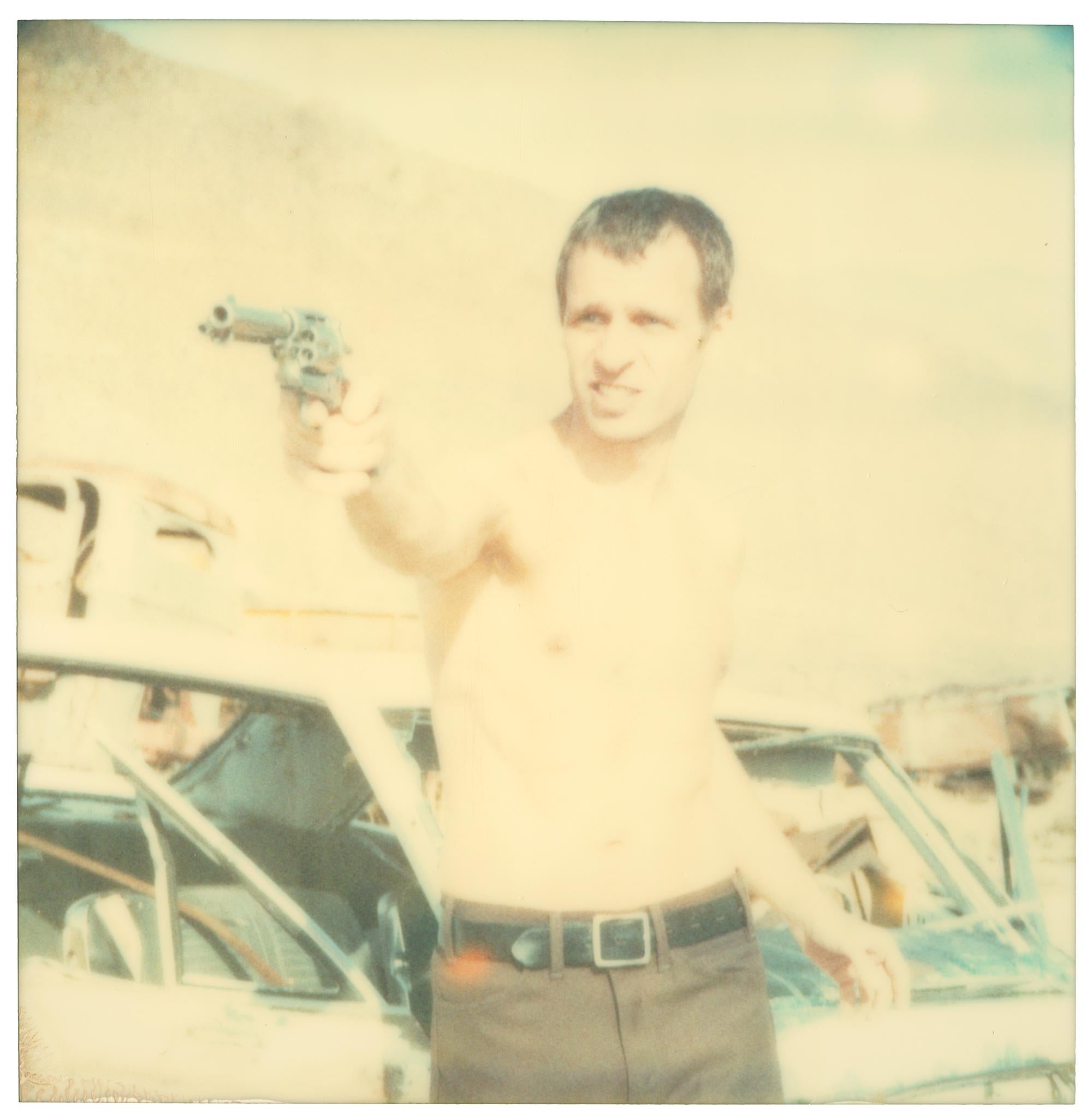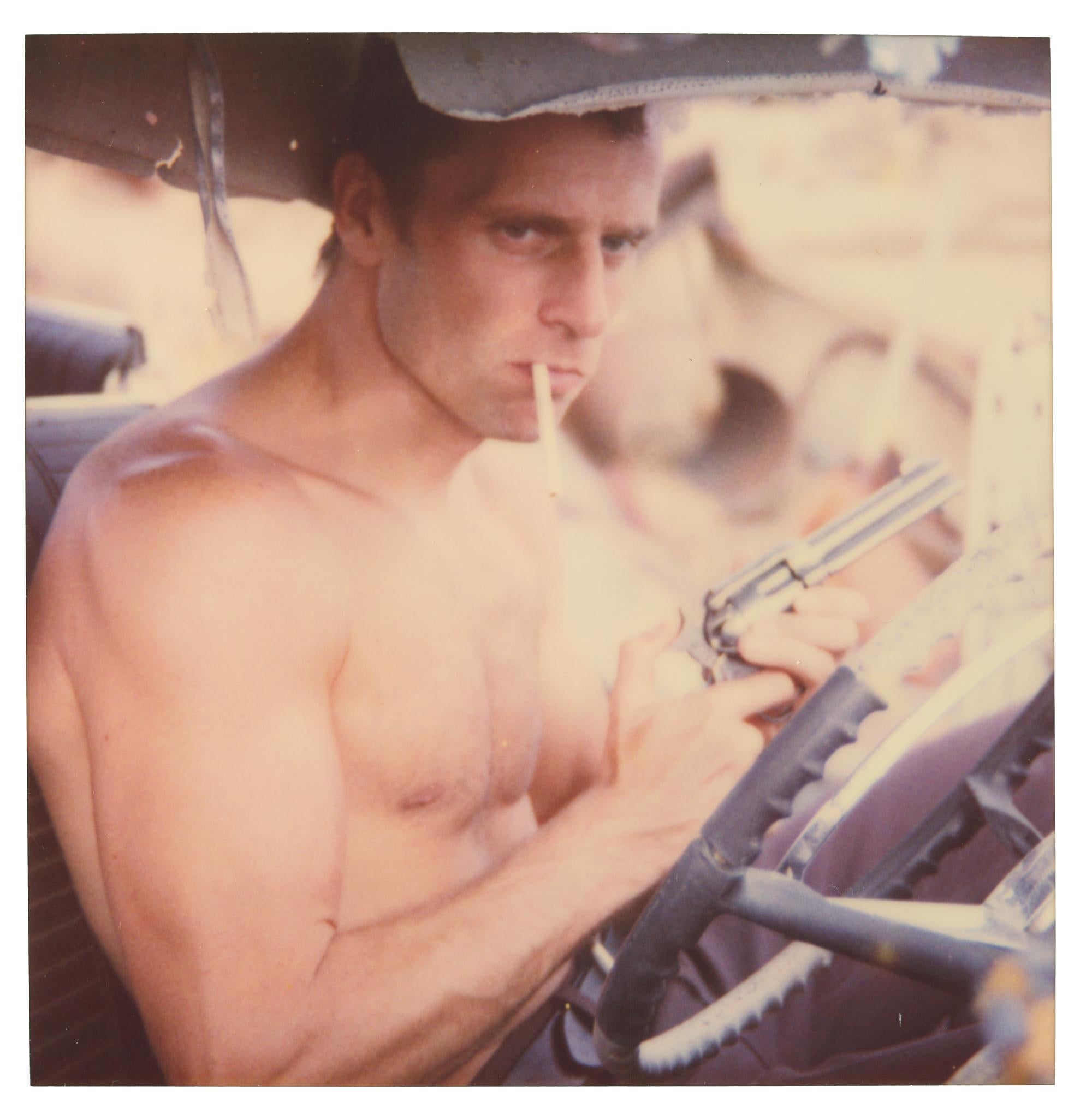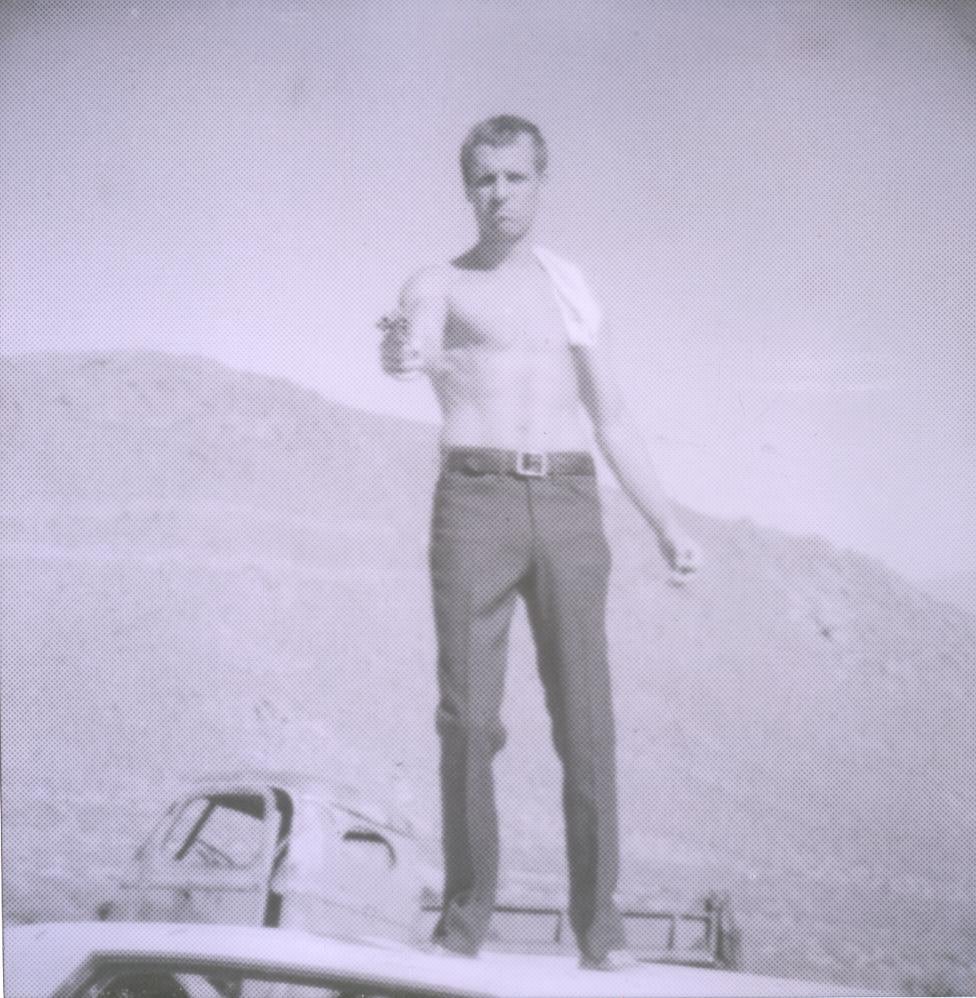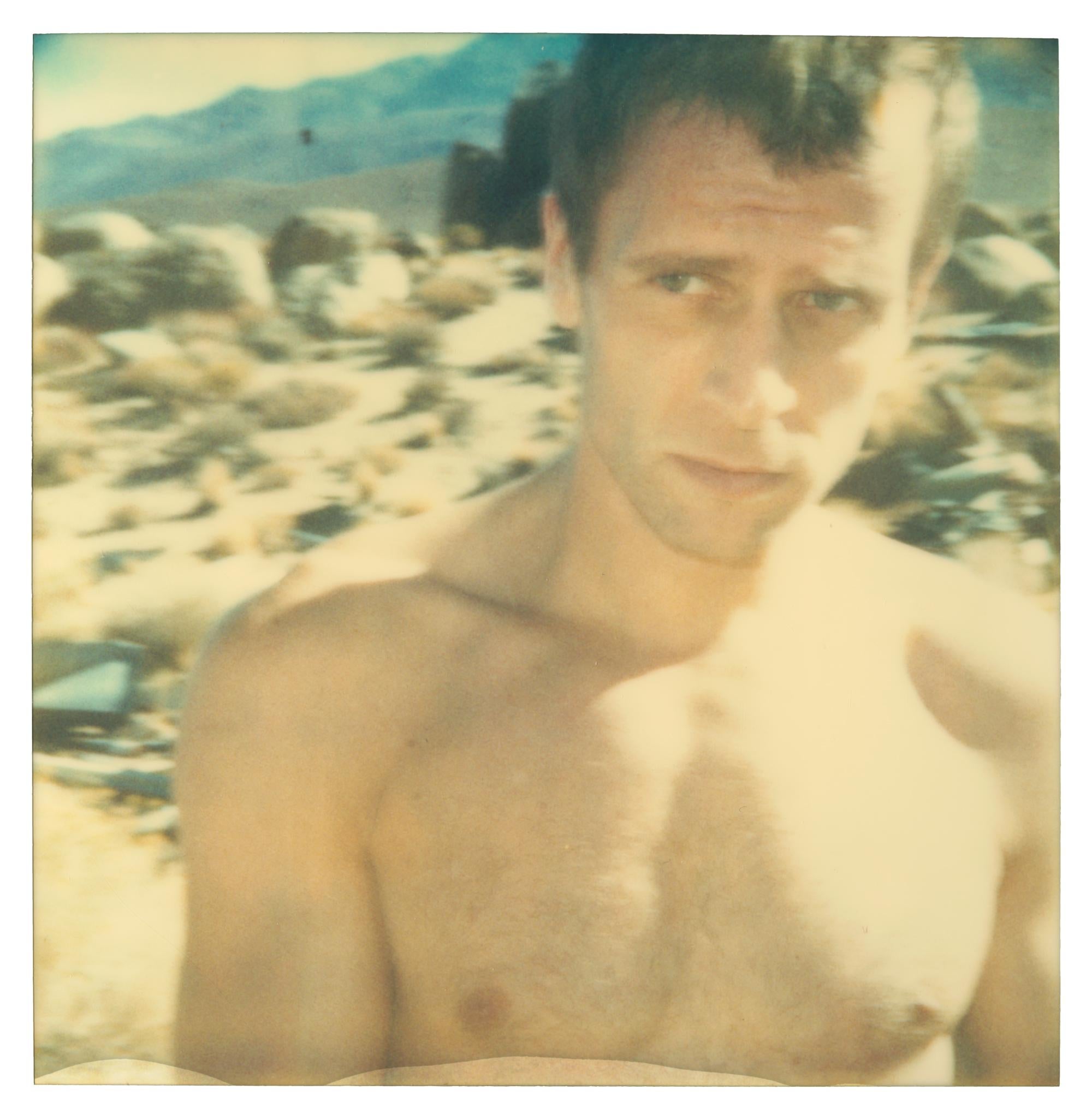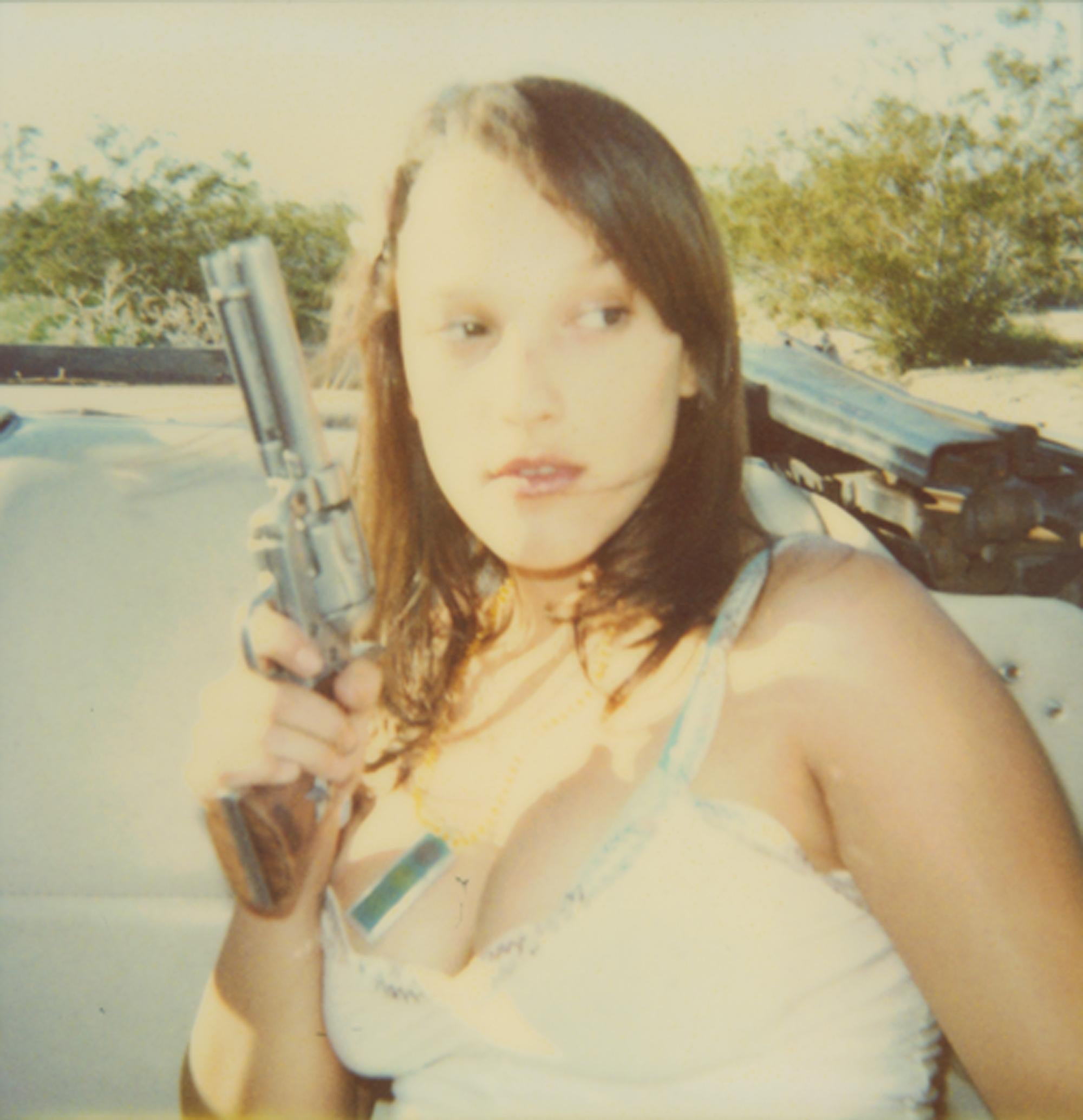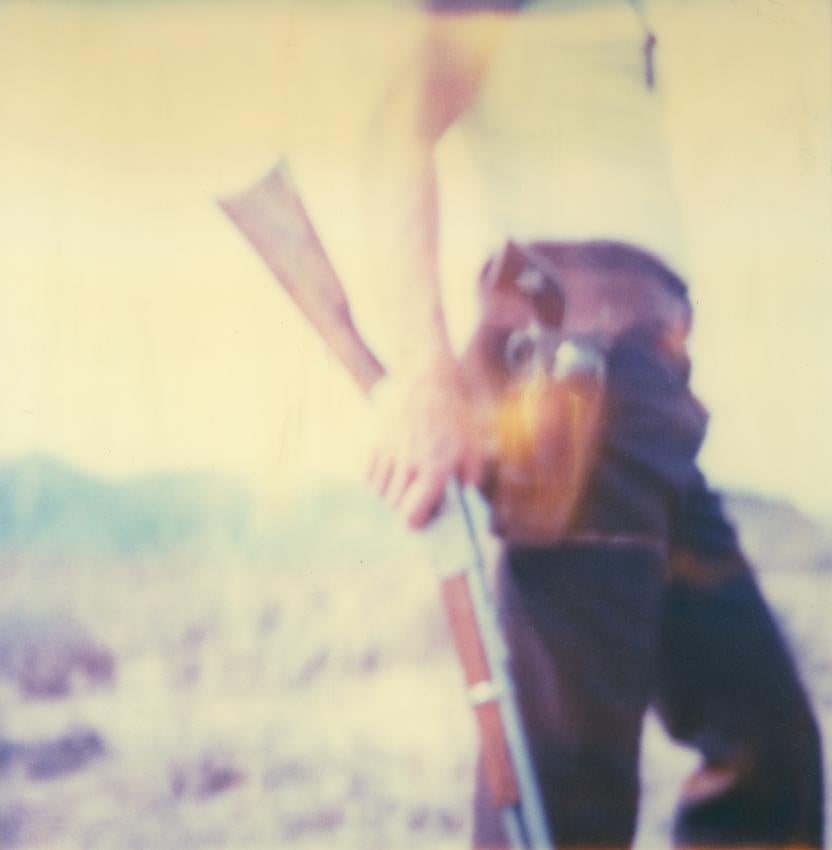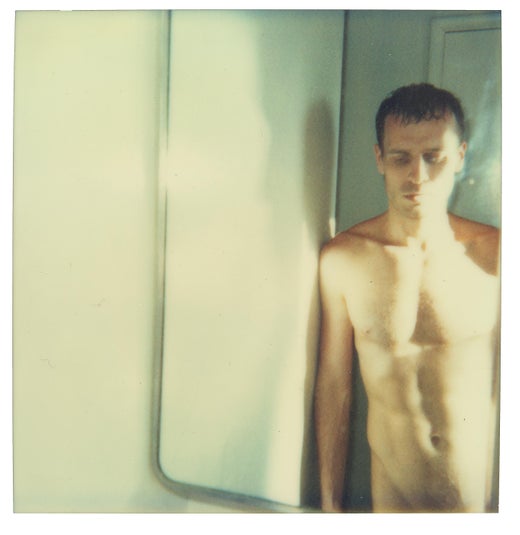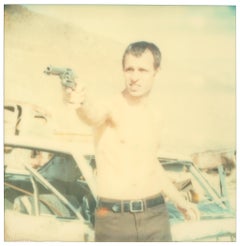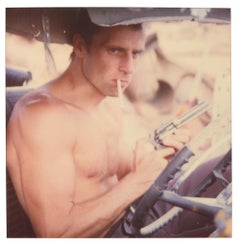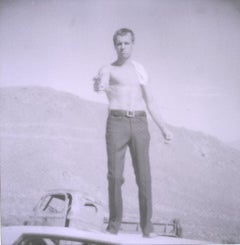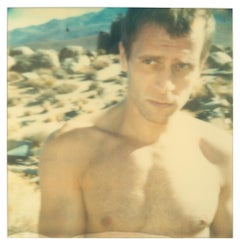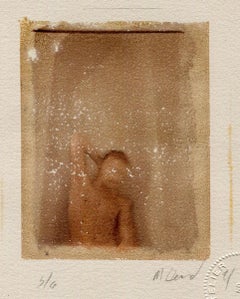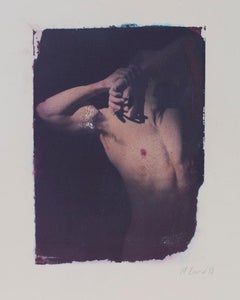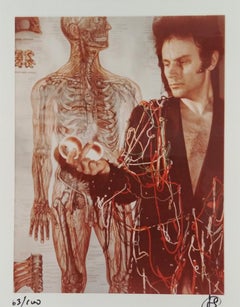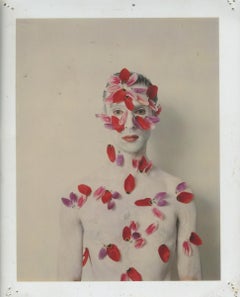Items Similar to Loading the Gun (Wastelands) hand printed analog C-Print, based on a Polaroid
Want more images or videos?
Request additional images or videos from the seller
1 of 5
Stefanie SchneiderLoading the Gun (Wastelands) hand printed analog C-Print, based on a Polaroid2003
2003
$2,500
£1,937.98
€2,193.64
CA$3,578.03
A$3,904.43
CHF 2,026.63
MX$46,713.20
NOK 25,724.40
SEK 24,095.72
DKK 16,385.79
About the Item
Loading the Gun (Wastelands) - 2003
57x56cm,
Edition of 5,
analog C-Print, hand-printed by the artist on Fuji Crystal Archive Paper,
based on the Polaroid, Artist inventory Number 1234.03,
Not mounted. signature label and certificate.
Reality with the Tequila:
Stefanie Schneider’s Fertile Wasteland
by James Scarborough
“How much more than enough
for you for I for both of us darling?”
(E. E. Cummings)
Until he met her, his destiny was his own. Petty and inconsequential but still his own. He was cocksure and free, young and unaccountable, with dark hair and aquiline features. His expression was always pensive, a little troubled, but not of a maniacal sort. He was more bored than anything else. With a heart capable of violence.
Until she met him, she was pretty but unappreciated. Her soul had registered no seismic activity. Dust bowl weary, she’d yet to see better days. A languorous body, a sweet face with eyes that could be kind if so inclined.
Until she met him, she had not been inclined.
It began when he met her. She was struck in an instant by his ennui. The sum of their meeting was greater than the imbroglios and chicaneries of their respective existences. He was struck by the blank slate look in her eyes. They walked, detached and focused on the immediate, obscenely unaware of pending change across a terrain of mountainous desert, their eyes downcast and world-weary, unable to account for the buoyant feeling in her heart. His hard-guy shtick went from potentiality to ruse. The gun was not a weapon but a prop, a way to pass time. Neither saw the dark clouds massing on the horizon.
They found themselves alone in the expanses of time, unaware of the calamity that percolated even as they posed like school kids for the pictures. Happiness brimmed in that wild terrain. Maybe things were beginning to look up.
That’s when the shooting started…
Stefanie Schneider assumes that our experience of lived reality (buying groceries, having a relationship with someone, driving a car) does not correspond to the actual nature of lived reality itself, that what we think of as reality is more like a margarita without the tequila.
Stefanie Schneider’s reality is reality with the tequila. She does not abolish concepts that orient us, cause and effect, time, plot, and story line, she just plays with them. She invites us to play with them, too. She offers us a hybrid reality, more amorphous than that with a conventional subject, verb, and predicate. Open-ended, this hybrid reality does not resolve itself. It frustrates anyone with pedestrian expectations but once we inebriate those expectations away, her work exhilarates us and even the hangover is good. An exploration of how she undermines our expectation of what we assume to be our lived reality, the reasons why she undermines our expectations, and the end-result, as posited in this book, will show how she bursts open our apparatus of perception and acknowledges life’s fluidity, its density, its complexity. Its beauty.
She undermines expectations of our experience of reality with odd, other- worldly images and with startling and unexpected compressions and expansions of time and narrative sequence. The landscape seems familiar enough, scenes from the Old West: broad panoramic vistas with rolling hills dotted with trees and chaparral, dusty prairies with trees and shrubs and craggy rocks, close-up shots of trees. But they’re not familiar. These mis-en-scenes radiate an unsettling Picasso Blue Period glow or the intense celestial blue of the cafe skies that Van Gogh painted in the south of France. Yellow starbursts punctuate images as if seen through the viewfinder of a flying saucer. At the same time, objects appear both vintage and futuristic, the landscape of a post-apocalyptic world.
Landscapes change seemingly at random as do the seasons. Stefanie Schneider offers no indication of how time flows here, except that it conceivably turns in on itself and then goes its merry way. Time is a river whose source is a deep murky spring which blusters about with an occasional swirling eddy.
That Stefanie Schneider thwarts an easy reading is obvious but why does she do this? Since she will not countenance anything linear, logical, or sequential, and because she does not relish anything concrete and specific, she has to roil things up a bit. Nor does she seem comfortable with a book of images that is settled, discrete, and accountable. Instead she wants to create a panoply of anxious moments that refuse to settle down into any predetermined reading. She seeks to assemble the elements, establish a provisional cosmology and then let each of us bring our own life experiences to bear on the enterprise. She unravels the paucity of a universe compromised by a matrix of either/or and replaces it with a kaleidoscopic neither/both cornucopia.
- Creator:Stefanie Schneider (1968, German)
- Creation Year:2003
- Dimensions:Height: 22.45 in (57 cm)Width: 22.05 in (56 cm)Depth: 0.12 in (3 mm)
- Medium:
- Movement & Style:
- Period:
- Condition:
- Gallery Location:Morongo Valley, CA
- Reference Number:1stDibs: LU65239591202
Stefanie Schneider
Stefanie Schneider received her MFA in Communication Design at the Folkwang Schule Essen, Germany. Her work has been shown at the Museum for Photography, Braunschweig, Museum für Kommunikation, Berlin, the Institut für Neue Medien, Frankfurt, the Nassauischer Kunstverein, Wiesbaden, Kunstverein Bielefeld, Museum für Moderne Kunst Passau, Les Rencontres d'Arles, Foto -Triennale Esslingen., Bombay Beach Biennale 2018, 2019.
About the Seller
4.9
Platinum Seller
Premium sellers with a 4.7+ rating and 24-hour response times
Established in 1996
1stDibs seller since 2017
1,049 sales on 1stDibs
Typical response time: 1 hour
- ShippingRetrieving quote...Shipping from: Morongo Valley, CA
- Return Policy
More From This Seller
View AllReload! (Wastelands) - mounted - Polaroid, Contemporary, 21st Century, Color
By Stefanie Schneider
Located in Morongo Valley, CA
Reload! - I changed my mind (Wastelands) - 2003
Edition 2/5,
57x56cm,
Analog C-Print, hand-printed by the artist on Fuji Crystal Archive Paper,
based on the Polaroid, Artist invent...
Category
Early 2000s Contemporary Color Photography
Materials
Photographic Paper, Polaroid, Color, C Print, Archival Paper
Posing II (Wastelands) - Polaroid, Expired. Contemporary, Color
By Stefanie Schneider
Located in Morongo Valley, CA
Posing II (Wastelands), 2003
Edition of 10,
38x37cm,
Archival C-Print, based on the Polaroid.
Signature label and Certificate.
Artist Inventory No 117...
Category
Early 2000s Contemporary Portrait Photography
Materials
Archival Paper, Photographic Paper, C Print, Color, Polaroid
Last Chance (Wastelands) - Contemporary, Analog, Polaroid, Color
By Stefanie Schneider
Located in Morongo Valley, CA
Last Chance (Wastelands) - 2003
20x20cm,
Edition of 10 plus 2 Artist Proofs.
Archival C-Print, based on the original Polaroid.
Artist inventory Number 24104.
Signature label and...
Category
Early 2000s Contemporary Color Photography
Materials
Archival Paper, Photographic Paper, C Print, Color, Polaroid
Changes (Wastelands) - Polaroid, Expired. Contemporary, Color
By Stefanie Schneider
Located in Morongo Valley, CA
Changes (Wastelands), 2003
Edition of 1/10, 38x37cm,
digital C-Print, based on a Polaroid.
Signature label and Certificate.
Artist Inventory No 1178.01
Not mounted.
Offered is a pi...
Category
Early 2000s Contemporary Portrait Photography
Materials
Archival Paper, Photographic Paper, C Print, Color, Polaroid
'Six Shooter' (Till Death do us Part) - Polaroid, 21st Century, Contemporary
By Stefanie Schneider
Located in Morongo Valley, CA
'Six Shooter' (Till Death do us Part) - 2005,
20x20cm,
Edition 2/10,
archival C-Print, based on the Polaroid.
Certificate and Signature label.
Artist Inventory No. 9076.
Not mou...
Category
Early 2000s Contemporary Color Photography
Materials
Archival Paper, Photographic Paper, C Print, Color, Polaroid
The Man (Wastelands) - Contemporary, Analog, Polaroid, Color
By Stefanie Schneider
Located in Morongo Valley, CA
The Man (Wastelands) - 2003
20x20cm,
Edition of 10 plus 2 Artist Proofs.
Archival C-Print, based on the original Polaroid.
Artist inventory Number 22884.
Signature label and Cer...
Category
Early 2000s Contemporary Color Photography
Materials
Archival Paper, Photographic Paper, C Print, Color, Polaroid
$266 Sale Price
30% Off
You May Also Like
Untitled (Aiden 12), Polaroid Transfer by Mark Beard
By Mark Beard
Located in New York, NY
This polaroid transfer by Mark Beard is offered by CLAMP in New York City.
Category
1990s Contemporary Photography
Materials
Archival Paper, Polaroid
Untitled 17 (Polaroid Transfer of Standing Young Nude Man on Rives BFK)
By Mark Beard
Located in Hudson, NY
image size: 10 x 8 inches
Standing young nude male with dark background
Polaroid Transfer on 22 x 15 inch Rives BFK paper, unframed
signed SM Beard in pencil on bottom right corner....
Category
1990s Contemporary Nude Photography
Materials
Archival Paper, Polaroid
Autopoloroid
By Lucas Samaras
Located in Denton, TX
Ed. 63/100
Poloroid, 3 3/4 X 2 7/8 In.
Signed and numbered by Lucas Samaras on print margin.
Published by the Whitney Museum of American Art
From book, "Samaras Album"
Category
1960s Contemporary Color Photography
Materials
Photographic Paper
Untitled Polaroid 23, Unique Self Portrait Photograph by Dietmar Busse
By Dietmar Busse
Located in New York, NY
Untitled Polaroid 23, Unique Self Portrait Photograph by Dietmar Busse.
2001
Signed and dated in black ink, verso
Polaroid (Unique)
5 x 4 inches, image
Contact gallery for price.
Category
Early 2000s Contemporary Photography
Materials
Polaroid
Expired_14_2020 - Photograph by Serena Zeppilli
Located in Roma, IT
This photograph Expired_14_2020 was taken by the Italian photographer Serena Zeppilli.
It is part of the series "I was looking for something that I...
Category
21st Century and Contemporary Contemporary Figurative Photography
Materials
Photographic Paper
Polaroid of Andy Warhol Painting
By Andy Warhol
Located in Beverly Hills, CA
This work is unique photographic work taken under the direction of Andy Warhol.
Provenance: Gift of the artist, to the personal collection of Ronnie Cutrone to the current owner
Wo...
Category
1980s Pop Art Color Photography
Materials
Polaroid
More Ways To Browse
Sheep Oil On Canvas
Signed Prints Monotype
Sophie Taeuber Arp
Star Wars Vintage Prints
The Wailing Wall
Vintage Audubon Bird Prints
Vintage California Posters
Vintage Cartoon Posters
Vintage Circus Horse
Yarn Wall Hanging
16th Century Dutch
20th Dutch Prints
African American Quilters
African American Quilts
Alvar Sunol Lithographs
Anderson Lithograph
Andy Warhol Grace Jones
Andy Warhol Soup Cans
